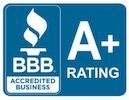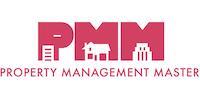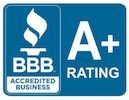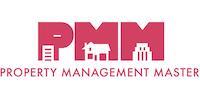Understanding the 20% Pass-Through Tax Deduction for Redding, CA Landlords
How Landlords Can Qualify for the 20% Pass-Through Tax Deduction

If you're a landlord in Redding, CA, you might have heard about the 20% pass-through tax deduction introduced by the Tax Cuts and Jobs Act (TCJA) of 2017. This deduction can provide significant tax savings, but it comes with specific qualifications and complexities. In this blog post, we'll break down what the 20% pass-through tax deduction is, who qualifies, and how landlords can ensure they meet the requirements to claim this valuable deduction.
What is the
20% Pass-Through Tax Deduction?
The TCJA introduced a new income tax deduction for owners of pass-through businesses, which includes most landlords. If your rental activity qualifies as a business for tax purposes, you could be eligible to deduct up to 20% of your net rental income from your income taxes. This deduction began in 2018 and is currently scheduled to last through 2025.
Who Qualifies for the 20% Deduction?
To benefit from this deduction, your rental property must be owned through a pass-through entity, such as a sole proprietorship, partnership, LLC, or S corporation. The income from these entities is "passed through" to the owners, who then report it on their individual tax returns.
For example, if you’re a sole proprietor like Alex, who owns a duplex and earns $20,000 in rental profit, you would report this income on IRS Schedule E. If your rental activity qualifies as a business, you could potentially deduct 20% of your net rental income, saving you a significant amount in taxes.
Income Thresholds and Deduction Limits
The deduction is available for landlords with taxable income up to $182,100 for singles and $364,200 for married couples filing jointly (as of 2023). If your income is within these limits, you can claim the full 20% deduction on your rental income. For those with higher incomes, the deduction is still available but is subject to additional limitations. For instance, if your taxable income exceeds $232,100 for singles or $464,200 for married couples, your deduction might be limited by factors such as the wages you pay to employees or the original purchase price of your depreciable property.
Ensuring Your Rental Activity Qualifies as a Business
One critical requirement to claim the 20% pass-through deduction is that your rental activity must be considered a business, not merely an investment. This means that you must engage in your rental activity regularly and continuously with the primary goal of making a profit.
The IRS has provided some guidance on what constitutes a rental business, including a safe harbor rule that can help landlords establish that their rental activity qualifies as a business for tax purposes.
IRS Safe Harbor Rule for Landlords
To use the safe harbor rule, landlords must meet the following requirements:
- Separate Books and Records: Maintain separate books and records for each rental real estate enterprise you own.
- 250 Hours of Rental Services: Perform at least 250 hours of rental services each year.
- Documenting Services: Keep detailed records of the services performed, including the hours spent, descriptions of the services, dates, and the identity of the person performing them.
Rental services that count toward the 250-hour requirement include tasks like advertising the property, negotiating leases, collecting rent, and managing maintenance. Importantly, these services can be performed by the landlord or by hired agents, employees, or independent contractors.
Exceptions and Considerations
It’s important to note that not all rental activities will qualify under the safe harbor rule. For example, properties rented under a triple net lease, where the tenant is responsible for property taxes, insurance, and maintenance, do not qualify. Additionally, if you live in the rental property for more than 14 days a year, or more than 10% of the days it is rented out, the property will not be eligible under the safe harbor rule.
What If You Don’t Meet the Safe Harbor Requirements?
If your rental activity doesn’t meet the safe harbor requirements, you can still potentially qualify for the pass-through deduction. The safe harbor rule is optional and is designed to simplify the process. Failing to meet the safe harbor doesn’t automatically disqualify your rental activity from being considered a business. Instead, the IRS will assess whether your activity qualifies based on the specific facts and circumstances of your situation.
Wrap Up
The 20% pass-through tax deduction can offer significant tax savings for landlords, but it’s essential to ensure your rental activity qualifies as a business under IRS guidelines. By maintaining detailed records, performing the necessary rental services, and understanding the safe harbor rule, you can confidently claim this deduction and maximize your tax benefits.
Share this post with a friend!
Disclaimer: The content on this blog is for informational purposes only and is not intended as legal or advice. Consult with a qualified professional for specific advice.


























